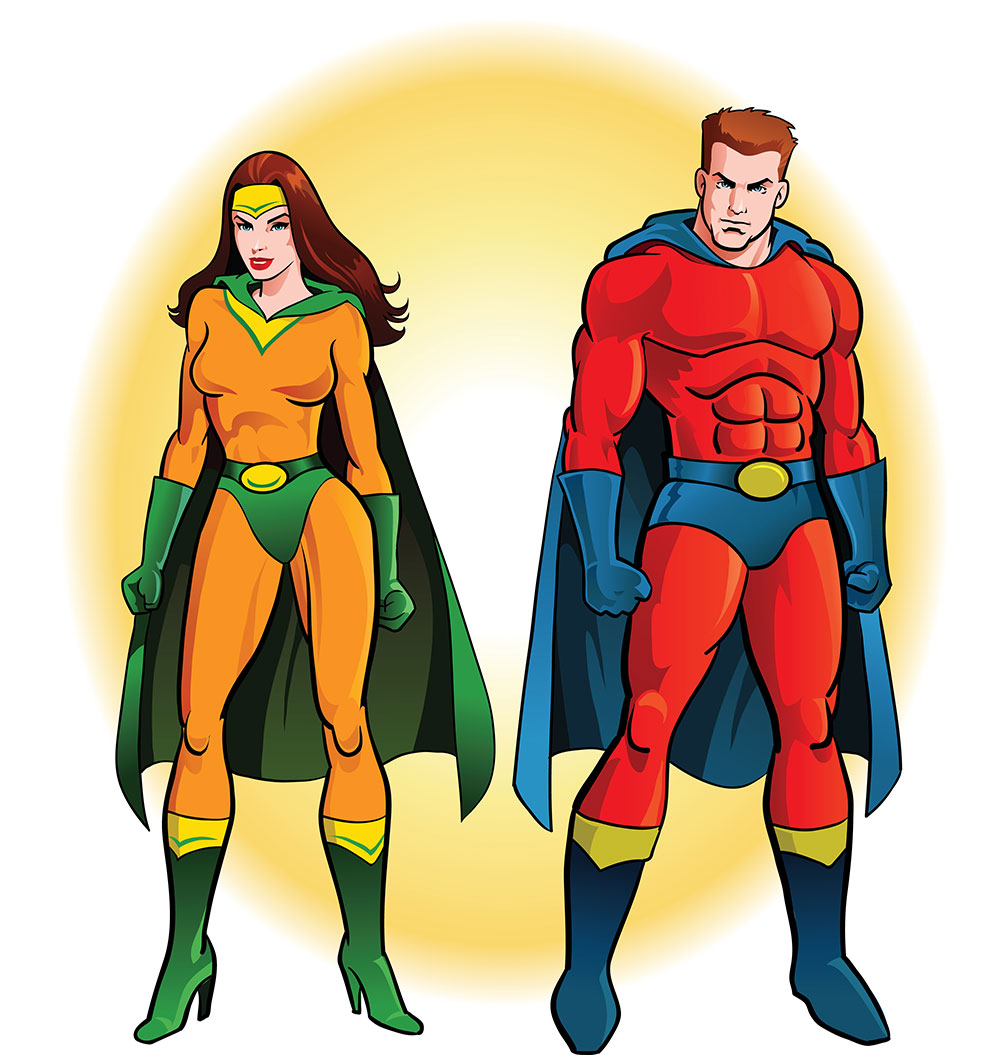 Ever since I was a little girl — from dressing up as Batgirl at age 4 to excitedly queuing for Iron Man 2 a few years ago — I’ve always loved superheroes. But growing up in the less politically correct 1980s, I never expected the superheroes on the screen or the page to look like me: mixed-race and female. Using a gender-neutral lens, I simply saw them as individuals. I admired their self-sacrifice, optimism, resilience and responsible handling of their own power, whether it was alien superstrength (Superman) or human ingenuity (Iron Man).
Ever since I was a little girl — from dressing up as Batgirl at age 4 to excitedly queuing for Iron Man 2 a few years ago — I’ve always loved superheroes. But growing up in the less politically correct 1980s, I never expected the superheroes on the screen or the page to look like me: mixed-race and female. Using a gender-neutral lens, I simply saw them as individuals. I admired their self-sacrifice, optimism, resilience and responsible handling of their own power, whether it was alien superstrength (Superman) or human ingenuity (Iron Man).
Though both society and women’s roles have evolved since I was a kid, many cringe-worthy stereotypes still dominate the superhero realm. Seeing female superheroes stuck in the shadows of their male peers makes me want to, as Tony Stark says about the Hulk in The Avengers, “lose control and turn into an enormous green rage monster.”
Sarah M. Coyne, Ph.D., an associate professor at Brigham Young University in Utah, addresses this very issue in her recent cowritten article, It’s a Bird! It’s a Plane! It’s a Gender Stereotype! “Superheroes represent the most gender-stereotyped portrayals we see in children’s media,” Coyne notes. “They may be contributing to the hypermasculinization of America.”
Elementary school is a time when gender differences start to get mapped out. Ultimately, superheroes are metaphors for power and human idealism, so it matters to kids how men and women are portrayed.
Jamie Armstrong, a mom in Renton, Wash., noticed that her 6-year-old son idolizes heroes like Spider-Man, Iron Man and Batman for their strength and ability to conquer bad guys. “He and his friends in preschool often want to engage in dramatic play where they are all the superheroes fighting off criminals,” she says.
As for girls, there may be more subtle messages about what females contribute or are capable of achieving. Armstrong notes, “Kids may take away the message that men are better at saving the day than women.”
The top five failures of not-so-superheroism
 Of all the standard superhero tropes, here are five that seem especially concerning when it comes to teaching kids what it means to be male, female and heroic.
Of all the standard superhero tropes, here are five that seem especially concerning when it comes to teaching kids what it means to be male, female and heroic.
- Manning up means clamming up. The way male superheroes are portrayed may give little boys the idea that gruffness, stoicism and anger are the only ways to express themselves. Becky Chambers, weekend editor of The Mary Sue, a popular pro-female, geek-centric website, says that men she knows who grew up with superhero cartoons and comic books actually struggle with this belief. “I think that the typical portrayal of male protagonists as brawling, iron-jawed loners plays into that,” Chambers observes. “Boys need to know that it’s OK to cry and need saving sometimes.”
- Women’s bodies defy gravity. An obvious point of contention is how women are drawn and dressed (or, rather, underdressed). “Many of the female superheroes are running around in outfits that wouldn’t stay on,” says Staci Crouch, a Seattle geek and mom of a 4-year-old boy. “I think it not only gives girls unrealistic goals, but it could also give boys unrealistic expectations of what women are supposed to look like.”
- Don’t expect much from female characters. This one is so sneaky, I didn’t even realize it was an issue until Chambers articulated it. “The moment where a male character either threatens a female character or questions her ability based on her gender implies that our heroine has to show [by kicking his butt] that she’s not like those other girls,” Chambers explains. “[This] sends the message that we’re not supposed to expect much out of girls. That’s a really toxic idea to plant in kids’ heads.”
- There just aren’t many leading ladies. We’ve all heard of Wonder Woman and other semi-well-known female superheroes, such as Ms. Marvel, Batgirl, Black Widow and some of the X-Men ensemble. But aside from these outliers, major production studios and publishers routinely dismiss leading heroines from the main plotline. The total number of big-budget, female-led super-hero movies ever made can be counted on one hand: Supergirl, Elektra, Catwoman, Tank Girl and Barb Wire. In a typical blockbuster, female superheroes tend to serve only as secondary characters or as plot devices for a male superhero’s story. This sends a message that the women aren’t significant enough to be primary characters.
-
The girlfriend is in trouble — again. Quite often, there is a non-super female who wields significant influence over a male lead by needing constant saving from harm: Pepper Potts for Iron Man, Lois Lane for Superman and Jane Foster for Thor, to name just a few. “A male superhero often seems focused on a specific woman in his life who actually holds a significant amount of power over him,” says Alison Slavin, a Redmond, Wash.-based video game producer and mom. As if protecting the world weren’t enough, male super-heroes frequently have to save the girl and prevent the end of civilization all at once. But the balance doesn’t ever seem to tip the other way. “Rarely is a female superhero even linked to a male,” Slavin says, “and if she is, it has little to do with how she acts or what she does.”
Don’t throw out the ‘bat’ with the bathwater
Movie studios and publishers should not be afraid to embrace superheroes who don’t fall into stereotype traps. The new Ms. Marvel reboot, featuring a teenage Pakistani American Muslim girl as the lead, is a fantastic start. But kids don’t have to wait for the entertainment industry to come around. They can create their own superheroes the old-fashioned way — by drawing them, by dressing up or by checking out websites such as Sprout and HEROized.
Parents can also minimize the effect of outdated and damaging gender stereotypes by choosing age-appropriate stories for kids and talking to them about what they see. In her media stereotyping study, Coyne recommends limiting preschool-age children to superhero media intended specifically for them, such as Super Why! and Word Girl. For more age-appropriate ideas, see the sidebar or visit Common Sense Media, a nonpartisan, nonprofit media review site for kids and families.
If I gleaned anything during all my years as a superhero fan, it’s this: The costumes and superpowers may be intriguing, but what’s most interesting about superheroes is their choice to help people instead of staying comfortable and safe. “The best superheroes are the ones who are flawed but overcome their own shortcomings to do what is right,” says Cyrus Kirby, a Minnesota-based dad of three and proprietor of the Father Geek website. “That’s a good lesson to learn, regardless [of] if you are a boy or a girl.”











